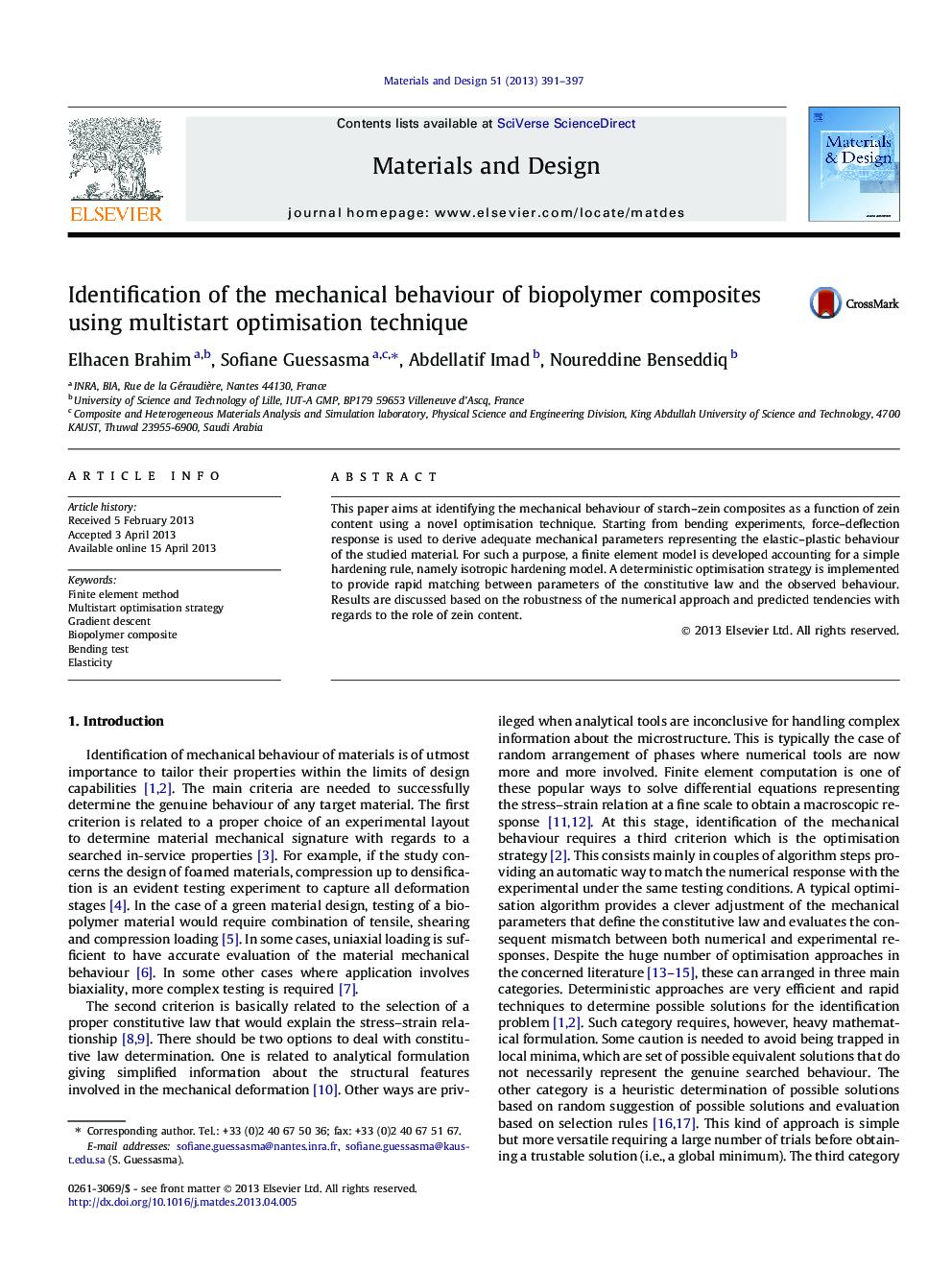| Article ID | Journal | Published Year | Pages | File Type |
|---|---|---|---|---|
| 829853 | Materials & Design (1980-2015) | 2013 | 7 Pages |
•Starch–zein composites obeys to bilinear plasticity law.•Multistart optimisation prevents local minimum traps and requires FE runs below 200.•Young’s modulus in the range 1.5–1.9 GPa does not depend on zein content.•Under forming conditions, zein content influence is more related to plasticity.•Tangent modulus decreases by 74% and yield stress increases by 75% in full range.
This paper aims at identifying the mechanical behaviour of starch–zein composites as a function of zein content using a novel optimisation technique. Starting from bending experiments, force–deflection response is used to derive adequate mechanical parameters representing the elastic–plastic behaviour of the studied material. For such a purpose, a finite element model is developed accounting for a simple hardening rule, namely isotropic hardening model. A deterministic optimisation strategy is implemented to provide rapid matching between parameters of the constitutive law and the observed behaviour. Results are discussed based on the robustness of the numerical approach and predicted tendencies with regards to the role of zein content.
